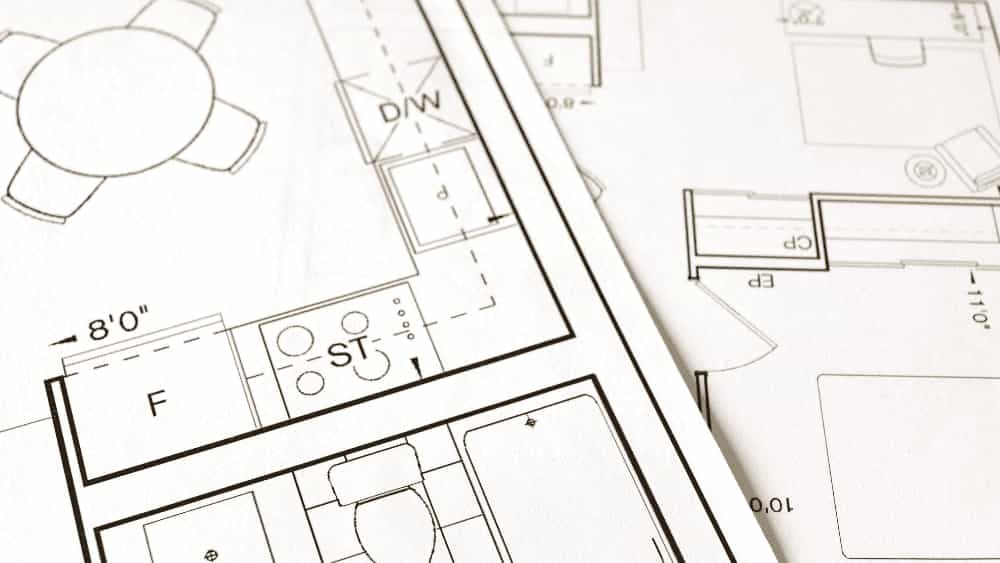
When taking their first step toward homeownership, prospective buyers are faced with a big decision: Build from scratch or purchase an existing home? The answer often depends on their desired features, budget, and finances.
According to the National Association of Realtors, the median sales price of existing single-family homes in the United States was $388,800 in April 2023, an increase of 9.7 percent from the previous year. For the same period, the U.S. Census Bureau and U.S. Department of Housing and Urban Development (HUD) reported a median sales price of $420,800 for new single-family homes.
For some prospective buyers, the cost difference between a new home and resale home can initially feel like a dealbreaker. For others, it may be a worthy expense to build a brand-new home to their personal specifications.
To make the decision a bit easier, let’s break down the overall cost and see how your dollars are being spent should you decide to build new.
Building Cost Per Square Foot
Per survey data from HomeAdvisor, the cost to build a new home can range from $117,971 to $450,345, with an average of $284,158. This overall cost to build a house will vary due to region, home type, size and desired home features or luxuries.
New construction typically costs between $100 and $200 per square foot, but additions and customizations may quickly inflate the expense to $500 or more per square foot. To discover the exact cost per square foot, it is recommended for you to ask your builder.
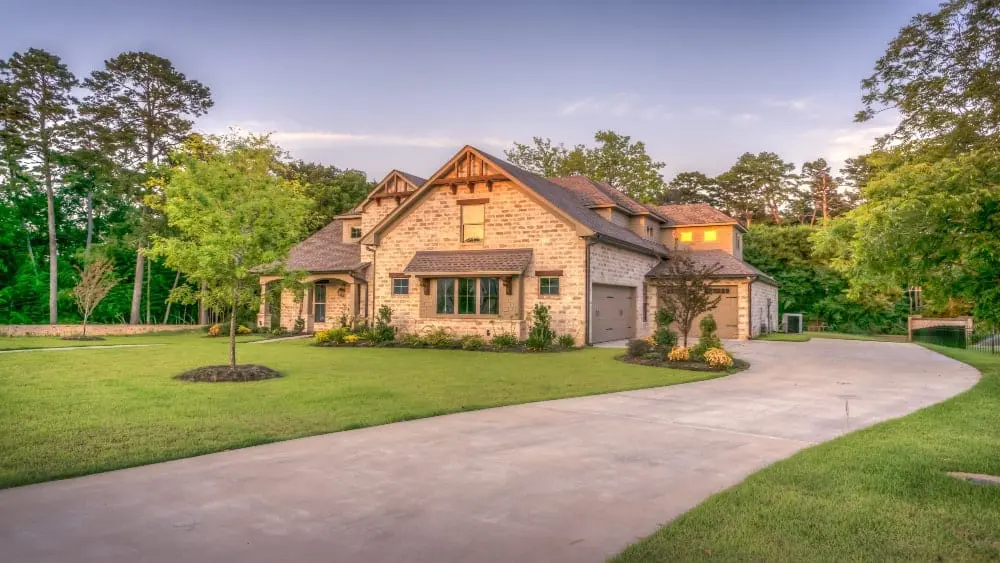
Pre-Construction Costs
A considerable amount of labor goes into obtaining the correct permits, developing a home plan, hiring a team, and preparing the lot before construction even begins. You can expect pre-construction considerations to make up about 10 percent to 25 percent of total project costs.
Paperwork: Plans, Permits and Cost Estimates
First, you should choose a floor plan. Whether you choose a popular design from a company or builder that provides house plans or hire an architect to draw up a unique custom home, just keep in mind that the more detailed and personalized the blueprints, the pricier it will be. House plans typically cost between $2,000 and $8,000.
One way to cut this cost down can be to use a pre-drawn design. Sites like Houseplans.com offer thousands of unique designs to fit any lot and style, and you can expect to spend only around $1,500. Depending on your area, you may need to have some adjustments made (including engineering, stamping, etc.), which aren’t included in the cost, but you can still save time and money compared to starting from scratch.
After selecting and purchasing the floor plan for your home, the next step is to consult your builder or general contractor with the bid set in hand. The bid set includes all the relevant information your contractor needs, including the floor plan and exterior images or elevations of each side plus roof pitches, to give you a cost-to-build estimate. Your contractor will examine the plans, ask questions, and take notes to get a full picture of your dream home design.
Your contractor also should be familiar with local codes and the required building permits that you will need before beginning construction. Costs can vary, but you can expect to pay an average of $1,200 to $2,000 for a building permit. Other permits, such as for basements, electrical, HVAC and plumbing, may also be required.
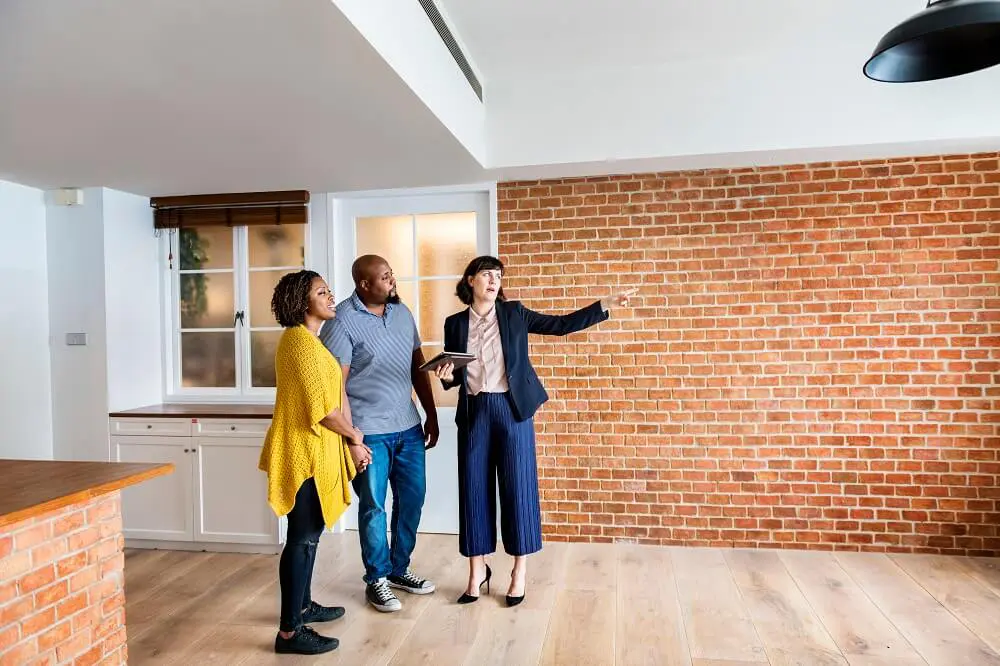
Professional Fees
Depending on your chosen home plan and desired features, you will likely interact with several design professionals. Your general contractor (sometimes the same as your builder) serves as your project lead and point of contact and manages the other professionals on your team.
General contractors typically charge about 10 percent to 20 percent of the total construction cost. This is sometimes referred to as “cost-plus.” Experienced contractors will outline their payment plan and options in the initial contract prior to starting the job. A portion paid is usually paid upfront and the remaining balance upon completion, or payments are made before each new building phase begins.
Other professional hires may include architects ($125–$250 per hour), engineers ($100–$200 per hour), draftsperson ($50–$130 per hour), interior designer ($50–$200 per hour) and landscape architect ($70–$150 per hour). While you may not need all these services for your home, they are another potential cost to keep in mind and discuss with your contractor.
Land Purchasing and Lot Preparation
You will likely spend a large chunk of the overall project budget on purchasing land and preparing the lot. Depending on size, location and other factors, the lot may cost anywhere between $3,000 and $150,000.
According to the National Association of Home Builders (NAHB) “2019 Cost of Constructing a Home” survey, homeowners could expect to spend an average of $89,540 on a finished lot of 22,094 square feet. You will probably find significantly cheaper undeveloped lots in rural areas but may end up spending more to install utilities.
If the site is not connected to utilities, sewer, or cable lines, it is considered an unfinished lot. To prepare to build on the land, you’ll likely be charged impact fees to connect to city sewers ($1,300–$5,000), the city electric grid ($1,000–$30,000) and city water lines ($1,000–$5,000).
Lots with less desirable conditions can pose additional problems and costs. You may need to have an expert test the soil before digging to prevent setting a foundation on heavily saturated soil or groundwater ($800–$2,100). Any uneven terrain, overgrown brush or trees may require tree removal or land excavation and grading ($1,500–$5,300). A land survey may also be required to obtain legal documentation of your site’s boundaries and topography before building on the property ($400–$700).
If your lot has an existing home on it, demolition costs can range between $3,000 and $25,000. If you can use some parts of the existing home on your new home or sell various materials, you could save some dollars in the process.
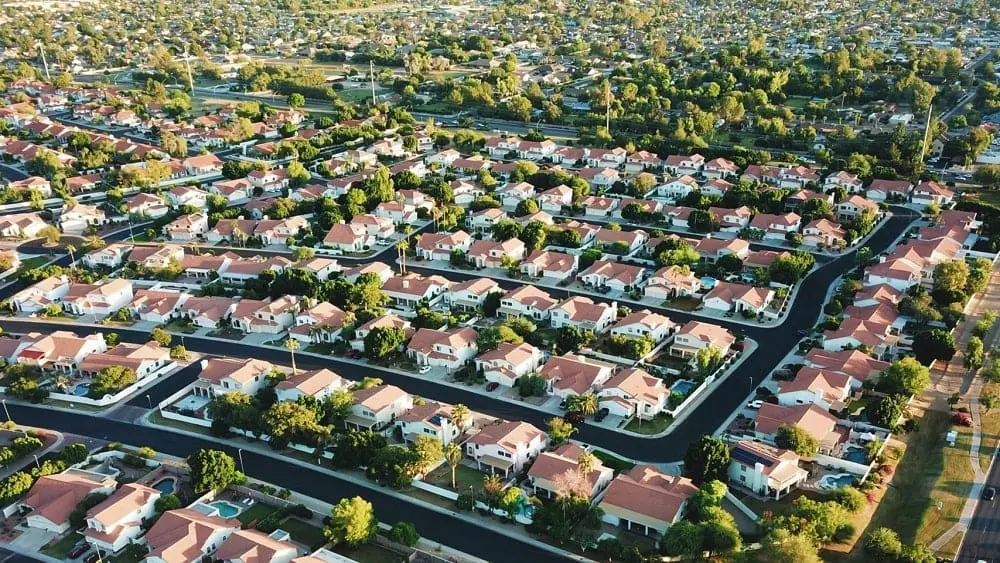
Residential Construction
The overall construction budget for your new home can be broken down into three major spending categories: materials, labor, and administrative items (including the design work and permits detailed above).
Materials Selection
Choosing your building materials can really make or break your budget. Recent supply-chain issues and global shortages on materials have driven up prices while the market is in short supply. Consult with your contractor if there is a specific material that you want in your home. They may be able to share the best time to purchase, especially if you need to order months in advance to ensure timely arrival.
Material cost estimates can vary widely by home size, design, and expense for shipment or delivery to the site. Lumber, for example, may cost between $25,000 and $65,000 while concrete may cost between $1,000 and $10,000.
Other important materials include:
- Drywall – approximately $10 per sheet
- Flooring – $1–$5 per square foot
- Siding – $2–$15 per square foot
- Insulation – $0.10–$1 per square foot
- Roofing – $1,000–$3,000 total
Each of these materials has a high end and a low end in terms of type and quality. Determining which materials are worth splurging or saving on depends on your priorities and home design.
Labor Expenses
Labor costs are the third major expense to keep in mind. This will also vary by the size of your project, timeline, location, and access to quality materials.
In addition to the general contractor fee, there will most likely be added expenses from subcontractors. For example, a framer may cost between $7 and $16 per hour and roofers may cost between $5,000 and $10,000 for the completed job. Additionally, an electrician may charge $50 to $100 per hour and a plumber may cost $45 to $200 per hour.
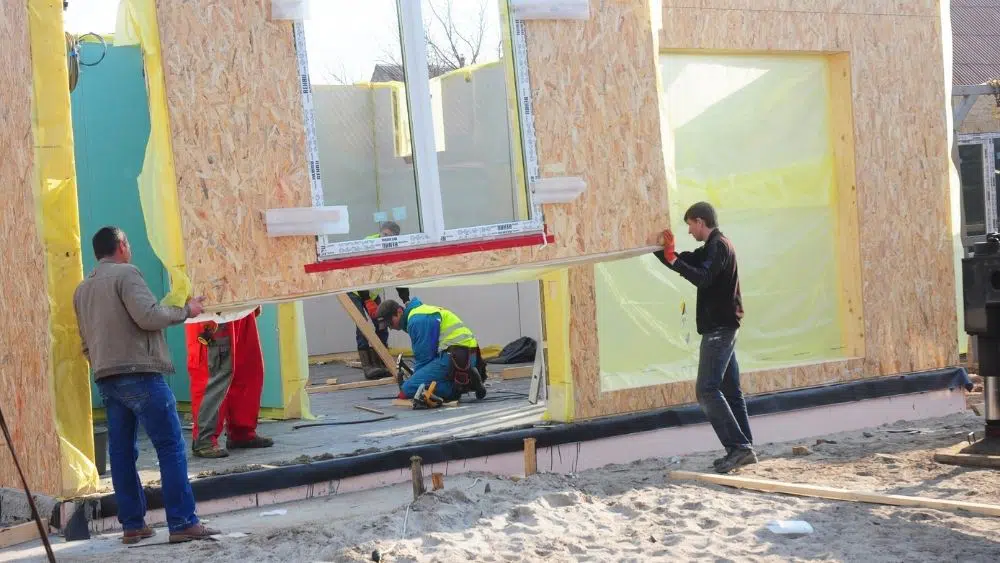
The Building Process: Cost Breakdown
The following outline is a step-by-step process to build a new home with the costs broken down by phase of construction.
Foundation
A new home foundation typically averages between $4 and $25 per square foot. The type of foundation (slab, crawlspace, or basement) will often depend on your needs and your geographic area.
The monolithic concrete slab is typically the cheapest option, ranging in price from $5,200 to $13,000, while a crawlspace can cost between $7,000 and $21,000, and an unfinished basement may cost anywhere from $10,000 to $30,000 on average. The biggest potential expense in this phase depends on whether you finish the basement. That can cost an additional $7 to $23 per square foot.
Frame
New home framing may cost between $20,000 and $50,000. The framing stage includes erecting the structure of the home and building out the backbone from the trusses to the roof. Framers usually complete the sheathing, subfloor installation and metal work and may include windows and doors.
Naturally, the cost depends on the size of the home. The larger the home, the longer the timeline and the greater the expense.
Exterior
Similar to framing, the exterior finishing cost depends on the size and design of the home as well as the market price of materials. Exterior home finishes cost between $40,000 and $60,000 on average. They include the siding, roofing ($5,600–$11,500), exterior painting ($1,800–$4,400) and exterior doors and windows ($3,000–$9,300).
Major Systems Installation
At this point, the frame is up, and the structure is beginning to look like a real house. To make it feel like a real house, it needs to be brought to life with water, air, and electrical power. Rough plumbing and HVAC systems will need to be installed, and a skilled electrician will get your home hooked up to the local power grid.
Installing major systems to your new home typically costs between $30,000 and $75,000, which includes rough-in plumbing (approximately $7,000–$15,000), electrical hookups ($20,000–$30,000) and an HVAC system ($1,500–$13,000 on average).
In some cases, you might need to install a septic tank or water system. Check with your builder to find out what options are available in your area. Septic tank installation costs $3,000 to $5,000 on average.
Looking to go green? More and more homeowners are choosing the eco-friendly route by installing solar panels. Equipment and installation costs between $18,000 and $35,000.
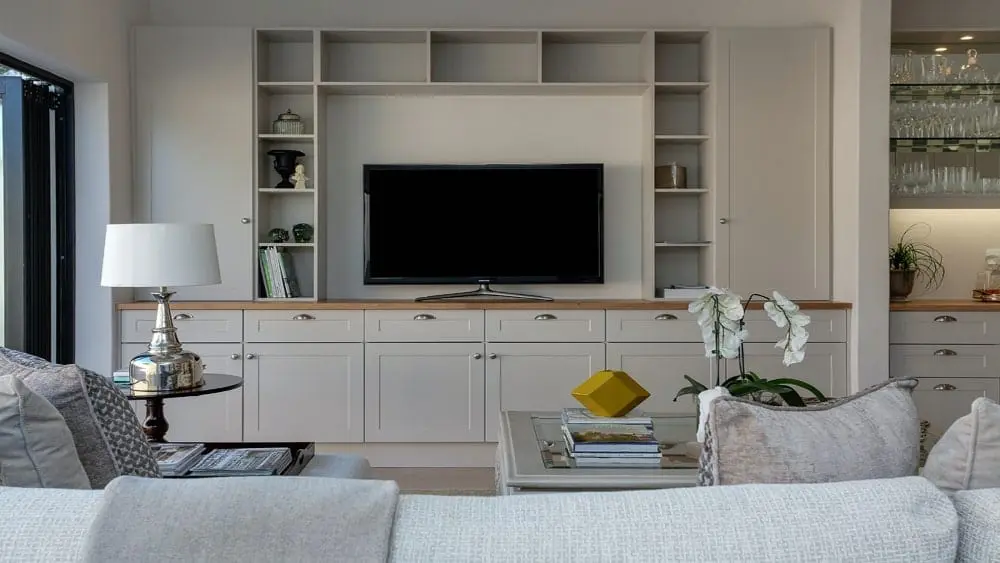
Interior Finishes
At this stage, your home is all but finished and in need of the personal touches that give it a warm and cozy feel. So, it’s not surprising that interior finishes are by far the largest expense in the construction budget, costing from $50,000 to $175,000 but easily exceeding that amount depending on the materials you select.
More high-end finishes will increase your price point very quickly, so be sure to keep your budget handy to avoid overspending. It’s easy to get caught up in the moment when your dream home feels so close to complete
Here are average installation costs for some common finishes during this phase:
- Custom cabinetry – $2,000–$30,000
- Countertops – $2,000–$4,000
- Flooring – $10,000–$35,000
- Interior paint – $4,000–$11,000
- Doors – $5,000–$20,000
- Lighting – $2,000–$12,000
- Indoor fireplace – $1,000–$10,000
This is also a great area of the budget to assert some DIY skills and save a little dough!
If you have the time and ability, consider painting your own interior rooms to save up to $10,000. Tile your own bathroom with your favorite colorful stones. Think about ways to make the move-in process a family project and make a custom kitchen table or fireplace surround together and build special memories of this happy occasion.
Appliance Installation
Homeowners can expect new appliances and their installation to cost between $3,500 and $15,000. This seems like a hefty price tag at first, but remember that these are brand-new appliances with all-new warranties.
You won’t be budgeting to replace your used fridge in the event that it breaks down during your first year in the home. Instead, you can take comfort in enjoying the peace of your new home and new appliances.
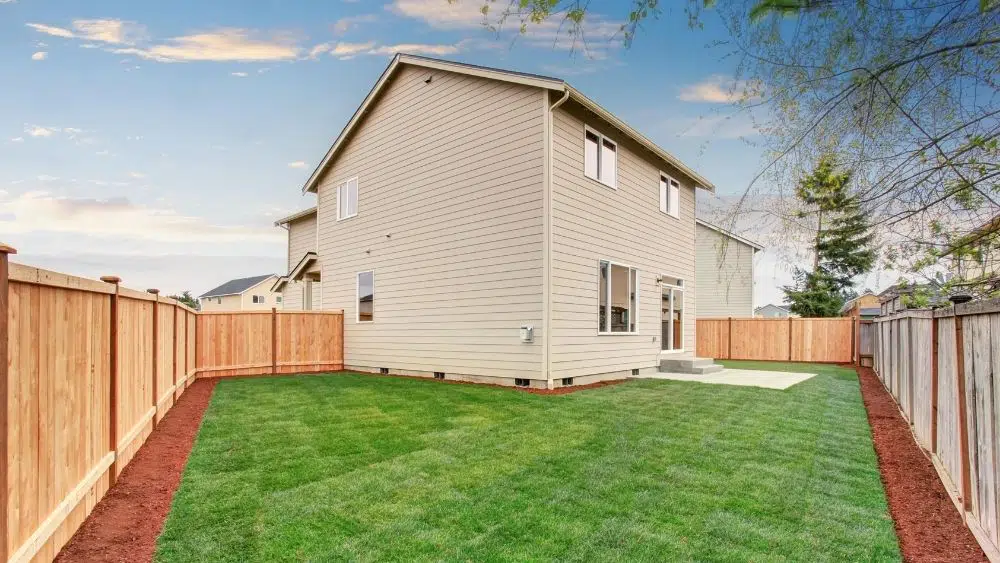
Fencing and Landscaping
To landscape your property, including front and back yards, you can expect professional landscaping to cost between $3,000 and $16,000, depending on the size and terrain of the land surrounding your home. Building a fence typically ranges from $1,330 to $5,550 on average. Once it’s all set up, there will be plenty of space for children to safely play and enjoy the outdoors.
Don’t forget to factor in any finishing touches that you may need, such as a driveway ($2,200–$6,100) or a concrete patio ($1,200–$4,300).
Extra Additions
You might ask, what happens if the house is complete and there’s still some wiggle room in the overall budget? This is the perfect time to consult your list of nice-to-have features. Consider installing that inground pool that you have always wanted ($36,000–$100,000), or a deck ($4,080–$11,300), or a screened-in porch to enjoy the fresh outdoor breeze ($600–$3,500).
Inspections
Throughout the homebuilding process, your contractor will be required to schedule periodic inspections. This includes the final inspection to obtain a certificate of occupancy, which verifies that all work on the structure was done to code and the building is safe to live in. Inspections overall will cost an average of $5,000 over the course of the project. If you decide to hire your own home inspector, the cost will go up further.
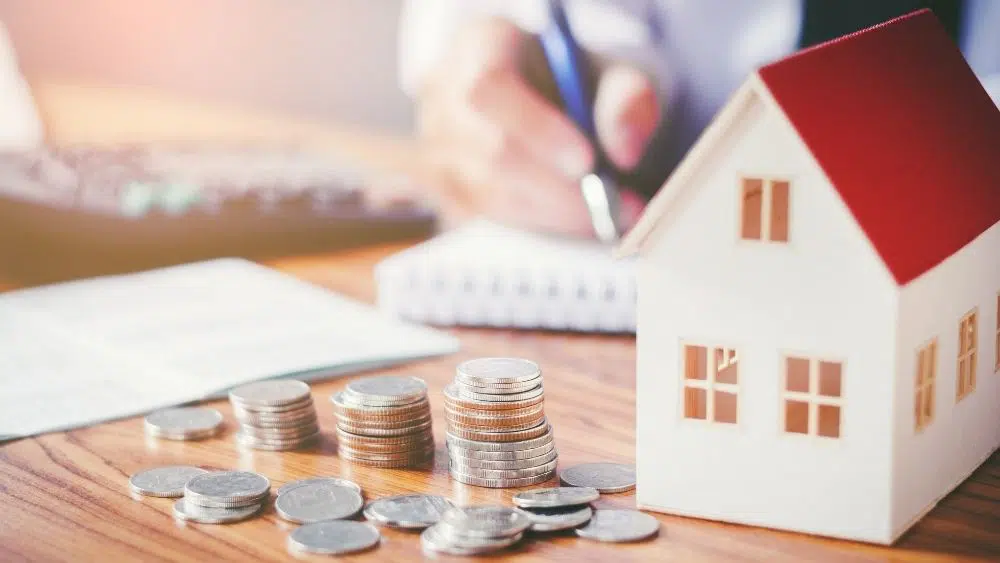
Additional Cost Factors
When considering building a home versus buying an existing home, several general factors can affect the cost of your project.
Size
Square footage has a direct impact on price of the house. Homes with greater square footage will cost more than those of a smaller size, as shown in the following table.
| Size in Square Feet | Average Range |
| 900 | $90,000–$180,000 |
| 1,200 | $120,000–$240,000 |
| 1,600 | $160,000–$320,000 |
| 2,000 | $200,000–$400,000 |
| 2,500 | $250,000–$500,000 |
| 3,000 | $300,000–$600,000 |
| 5,000 | $500,000–$1,000,000 |
Number of Bedrooms
The number of bedrooms in a home also affects the design of the new build and the size, which has an effect on the overall cost. Typically, the more bedrooms you include, the higher the cost to build the house.
| Number of Bedrooms | Cost Range |
| 2 | $93,000–$155,000 |
| 3 | $248,000–$310,000 |
| 4 | $388,000–$465,000 |
Levels
Any added levels to a home will increase your the cost of the house. For example, per Craftsman’s National Estimator, the materials and labor usually cost about $13 per square foot for framing a single-story home and approximately $22 per square foot for a two-story home.
Abstract or Uncommon Designs
Choosing a popular or more standardized floor plan will often be less expensive than a custom design with unique features. Curved walls, for example, are more challenging, and thus more expensive, to design and build than typical flat planes.
Type of Home
The type of home you choose also influences the overall cost. At the lower end of the price range are modular or manufactured homes ($180,000–$360,000). These homes are built in large parts at a manufacturing facility and assembled on your site. They offer fewer custom options but make the process significantly more affordable for homeowners on a budget.
Ranch-style homes tend to cost $100 to $200 per square foot on average. Even though they are one-story, they often cost more than a two-story due to their widespread floorplans and high foundation expense.
Modern homes may cost anywhere in the wide range of $750,000 to $15 million on average. This is largely due to abstract architectural add-ons and large expanses of glass.
Victorian homes typically cost between $250,000 and $550,000 to build, with bungalows and cottages costing a similar range of around $200,000 to $600,000, or about $250 per square foot.
Beach houses require an additional $20,000 to $60,000 on top of your build price to set the pier-and-beam foundation. It’s tempting to build the house now and lift it in the future, but lifting a house can run $25,000 to $100,000. It’s best to build the stilts now and save money in the long run and keep your home safe from flooding in the meantime.
Location
Geographic location has a major impact on the cost of building a home. The region’s home market value, its access to building materials and skilled labor, and the local cost of living all factor into the price by region. Based on median price per square foot, the Midwest and the South are less expensive markets to build in, while the Northeast and the West cost more, as seen in the following table.
| Region | Median Price Per Square Foot |
| Northeast | $153.54 |
| Midwest | $112.09 |
| South | $105.99 |
| West | $147.68 |
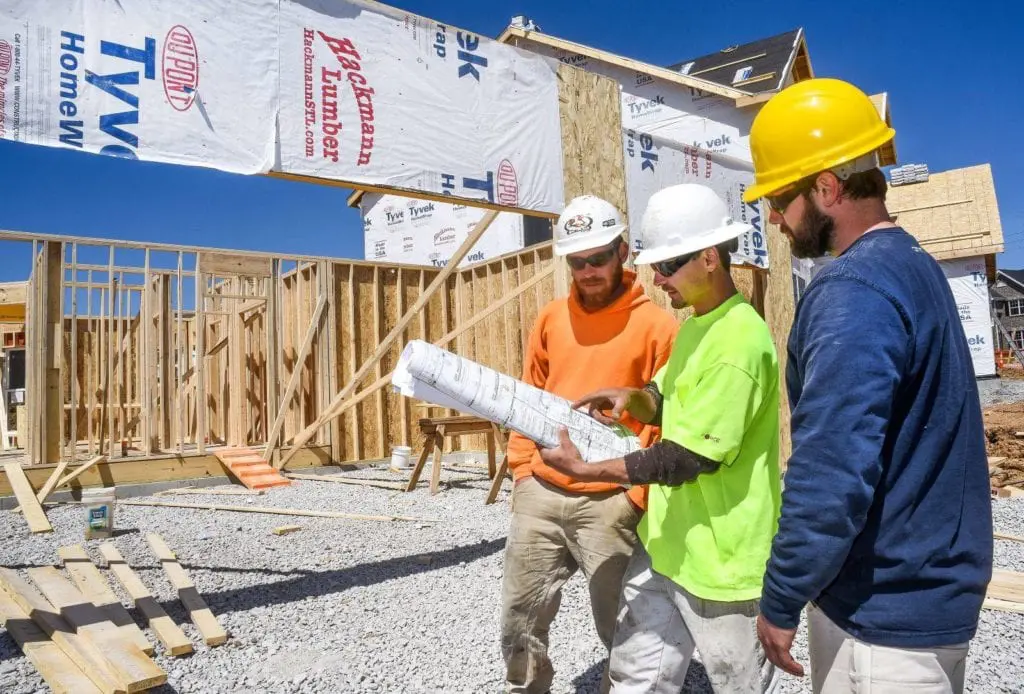
Frequently Asked Questions
If you’re still on the fence about building a new home, here are some frequently asked questions about the homebuilding process.
Is it cheaper to buy or build a new home?
Depending on location, market prices, and desired features, it could cost up to $150,000 more to build your new home than to buy existing. A significant factor will be whether you already own the land that you want to build on. If your lot is already finished, the total cost of building your home may be comparable to the sales price of buying an existing home.
The answer to this question is unique to you and your buying situation. If you feel somewhat picky about the features of your home and want to have a say in the construction process, the building may be a great fit for you. Depending on taxes, regional expenses, and material costs, your new build may be in the same price range as the existing homes that you might consider in the area. It’s best to survey your options and do your own research before making your final decision.
How does financing work?
If you are unable to provide cash funds for your project, there are financing options. Because the home is not yet built, you would not be eligible for a traditional mortgage and will need to pursue a construction loan.
These short-term loans can be used to fund the building of a new home and are released in smaller portions over the timeline of the project to fund each new phase. Some lenders will offer a construction-to-permanent loan that will roll into a traditional mortgage upon completion of the project.
Is hiring a general contractor necessary when building a new house?
If you are a skilled DIYer, you may be tempted to forgo hiring a general contractor and build your own home. If you have the time and the skills required, building your own home can save you an average of $20,000 and $60,000.
However, you might consider that savings against the time you’ll invest in the project. Professional contractors and subcontractors understand the ins and outs of building codes, permits, and timelines, enabling them to complete a project in a matter of months. Individuals will probably commit a year or more to completing their own home build.
How does a new homebuyer connect with a reliable builder?
When searching for a contractor to lead your new home project, you should do in-depth online searches, ask neighbors and friends for referrals, and get to know which builders have a solid reputation in your area. This professional will be leading the task to create not only your dream home but your biggest investment.
Solicit bids from a minimum of three to five contractors. Ask what technology they use to track progress daily and communicate with clients. Most contractors have some type of online tool or app that will allow the client to view progress at each phase of the build. Some even include photos to view your home as it is being built.
Meet in person with your top contractor candidates to discuss your proposal. Plan in advance to answer their questions and prepare several of your own. Additionally, you should check on their website or ask in person whether they have construction insurance.
Thinking Tiny: What is the cost to build a guest home?
You might consider building a tiny home or adding one to your property as a guest house. On average, building a tiny house will cost around $25,000 to $35,000. By converting a shipping container or reusing materials, some homeowners have created tiny homes for less than $10,000.
If a tiny house is just a bit too tiny for your family, you might consider a small house of around 600 square feet for a guest house. These typically cost between $50,000 and $75,000 for materials, labor, utility hookups, and contractor fees.
Choose Your Price Point
This article highlights multiple data points that offer a simple range of potential costs for building a new home. These provide a good baseline as you begin your research into local codes, material expenses, and contractor fees associated with building new in your area. Be sure to create a realistic budget at the beginning and stick to it. You’ll be glad that you did when you can relax and enjoy the benefits of your new home.

Melanie Theriault is a writer, counselor, and lifelong learner. She holds a B.A. in Sociology from Southwestern University, where she discovered her passion for fostering human connection through storytelling.
 Best Kitchen Flooring for a Dazzling Upgrade
Best Kitchen Flooring for a Dazzling Upgrade
Robert Newell
Interesting information..Our builder has evovoled using cinder block construction resulting in a reduced K factor and now is using wood vs cinder block and indicated the ccost is the same as is the K factor..for a 2100 sq ft house in AZ do you have a comparison on k factor and cost diferences?
Stephanie Brett Williams
We are looking into building a home and are new to the process. Your article was very informative. It broke everything down in sections and explained everything perfectly 👍
Vikram bhat
I’m looking for build a house in 20/30 area means 600 sqrft can I get idea on this??
Jamie Garcia
Hi Vikram,
You’ll need to talk with your builder for an accurate estimate.
Rosario Nussey
We re trying to buy a lot in Newbury Park , California. Our goal is to build our own home , at least 2600-2800 sq ft.
It will be a modest home , a good size kitchen . Also would like open feel .
Maybe 4 bedroom , 3 baths . We would like a one level home.
We do not know how to find a builder to consult in our area/ or an architect/ engineer. How can we find a good builder / architect ?
We had very bad experience with a contractor for our backyard. We do not want the same fiasco.
Do you think we can build our house for 500-600k, ( lot price not included.)
Jamie Garcia
Hi Rosario,
You can visit newhomesource.com and search for homes and builders in and around Newbury Park to find a list of great home builders in your area!
Mike
What they are saying are over price just by a house on ebay, it comes with the blue print and ready to submit to get your building permit. While you are waiting you can hire 2 or 3 guys to dig a hole and to lay those rebars. Don’t worry the inspector will teach you if you don’t know what you are doing. Add two more guys when pouring concrete. Relax and Wait for your order to arrive then hire three guys who uses their common sense that charge $15 to $20 to assemble the house. Everytime you need someone make sure they understand the work but if they don’t, don’t worry they are quick learner and they charges $15 to $20 per hour.
Do not hire contractor their workers are most likely have the same knowledge as your guys that you hired infront of homedepot. Just tell them what to do and they will do it. Job is done you saved a lot of money for another house project.
Craig
We are planning on building a log home in Tennessee. I keep hearing that maintenance (mostly exterior) is high on log homes. Is this true?
Jamie Garcia
Hi Craig,
You can find more info on log cabin/log home maintenance here: https://www.newhomesource.com/learn/log-cabin-homes/
Austin
This is priced wrong for 2022, why is it even titled for 2022…. You cant find a builder willing to build a home for less than $250 a sqft in Wisconsin.
Jamie Garcia
Hi Austin,
These figures are averages for across the U.S. – however, we will soon have a piece specifically on how much it costs to build a house in Wisconsin. Keep an eye on newhomesource.com/learn for that article!
Dana
This cost is far too low for any house design or contractor I’ve worked with. I’ve used the number of $250 to $450 per square foot based on complexity and homeowner choices. That and anyone who is worth anything is booked for at least a year here in my area of New England.